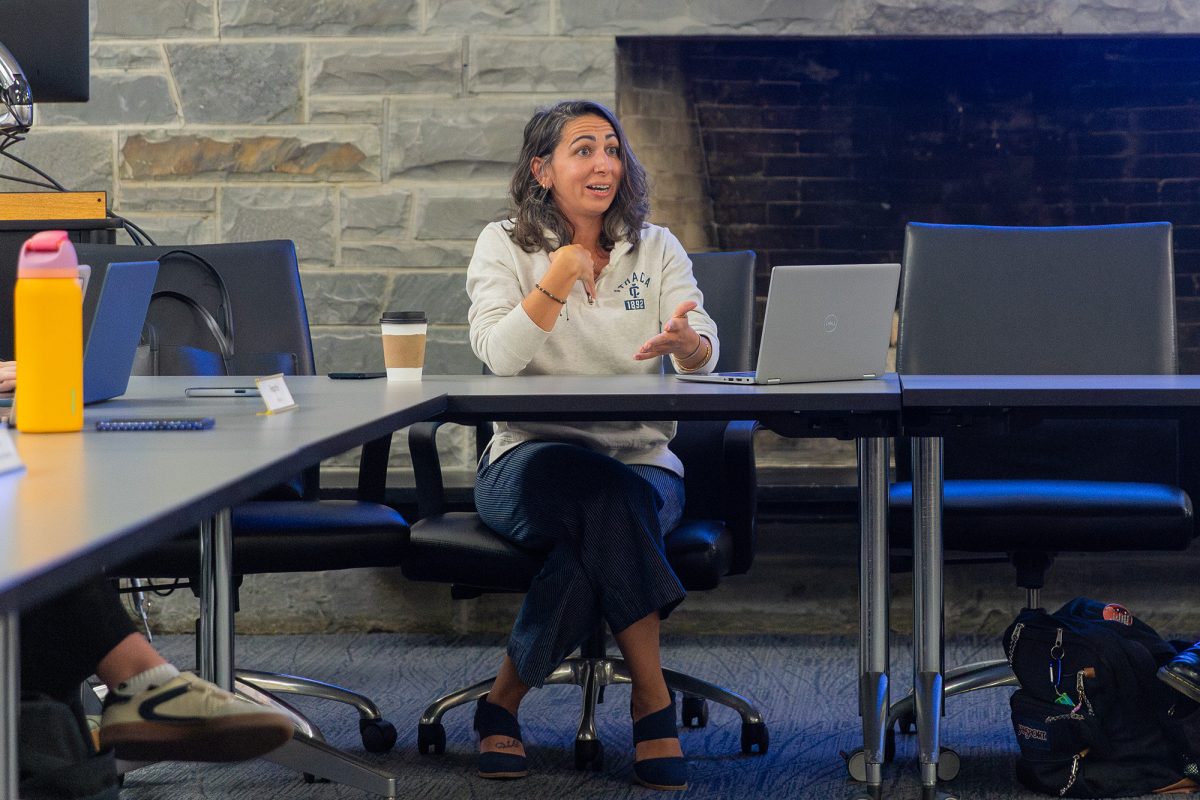Clutching white crosses in memory of hundreds of thousands of murdered Latin Americans, junior Jackee Berberabe and senior Ezekiel Wright stood among 22,000 protesters Nov. 19, in Fort Benning, Ga.
The vigil was part of the ninth annual protest of the Western Hemisphere Institute for Security Cooperation (WHINSEC), formerly known as the School of the Americas (SOA). The cooperation is a Spanish-language training school run by the U.S. Army in Fort Benning that trains military personnel from Latin American countries. More than 60,000 Latin American soldiers have attended the school since it began in 1946.
Berberabe said the school does not focus on human rights as part of the training, and trainees are not taught how to treat civilians, or why torture is wrong.
“Under the demands of these governments and these military leaders, many people are being tortured,” Berberabe said. “Innocent citizens are being completely pillaged and murdered for no reason under these people.”
At the protest, Berberabe and Wright represented Ithaca College’s chapter of Amnesty International, a club that seeks to promote human rights globally. Berberabe said more students were interested but couldn’t go because of academic obligations or financial constraints. She said the Student Government Association funded the trip at the last minute.
SOA Watch, an independent organization founded in 1990, uses legislative work and nonviolent approaches to express concern with the school and organize annual protests.
Protestors and critics of the school said training manuals promote techniques that violate human rights and democratic standards, and hold graduates from the school responsible for hundreds of human rights abuses. The SOA was forced to close in 2000, but reopened using its current name.
This year’s three-day rally included speakers, roundtables, workshops and films to educate protestors about the SOA issue. Bands performed benefit concerts each night, and Berberabe said the attendees discussed experiences they’d had with family members of people who had been killed. Protests of the school went on in eight other countries, including Argentina, Chile and Peru. The Georgia protest attracted people from both the United States and South America.
Berberabe said the school set up many “Security” and “No Trespassing” signs. Sunday morning, she said legal repercussions were announced if anybody went to fenced-off, private property. To make a statement, 16 people went underneath the gate and were arrested.
This year’s protest was Wright’s third. He said he first went to the protests in 2003 with nearly a dozen members of the college’s Students for a Just Peace (SJP) chapter to get to know members of SJP better. He became more involved in the SOA issue.
“The thing that I really like about the whole School of the Americas protest is that it seems to be a really achievable goal, because every year the amount of people grows,” he said.
Junior Sara Howard, president of Amnesty International, said that though club members have gone to the event in the past, the group’s action often stays at the college. Howard said she hopes Berberabe and Wright will set up workshops of their own in April.
“We usually do a lot of educational events here on campus, whether it’s bringing in speakers, or panels, or films,” Howard said. “This was something that we could learn from and take back to the college.”
Berberabe said there was no hostility or anger toward protestors at the rally, despite signs saying, “shut down the school of the assassins” and “close the torture school.” She said she attended a nonviolence workshop Nov. 18 during the protest, where she learned how to communicate to diffuse nonviolent situations.
“Everyone was clearly in a peaceful mindset, and was there to accomplish a goal that was to promote peace,” she said. “Everyone just had one goal in mind, and they stuck to it.”







